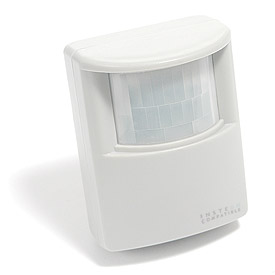
Insteon motion sensor
Lighting sensors that control both indoor and outdoor lights are now widely available at home improvement stores. Lighting sensors come in three general types: motion sensors, photosensors, and a combination of both. They can sometimes help you save electricity and money, but if set up improperly they can actually increase your electrical consumption.
Motion sensors use infrared technology to detect the presence of people in the room. They turn the light on when someone enters the room, and turn it off, after a short delay, when they have left. Motion sensors can only save energy if you have been in the habit of leaving lights on after you leave a room, and are best reserved for public facilities where no one tends to turn the lights off.
Photosensors turn lights on when it gets dark, and they usually control yard lights. They improve safety and security by assuring that outdoor areas are well lit, but they usually increase consumption since the lights operate throughout the night. A typical 100-watt bulb that is operated by a photosensor, for example, will operate for about 4300 hours per year and cost $35 to $45 annually at current rates. Simple photosensors should only be used in places where lighting is always needed throughout the night.
Combination sensors that detect both motion and darkness are the best bet for residential use since they can actually reduce energy consumption.
These sensors are often packaged as built-in units in outdoor light fixtures. They turn a light on when someone walks nearby at night, then shut it off again after a brief delay. If you currently leave an outdoor light on all night, these combination sensors offer the best of both worlds: the light remains off most of the time, but illuminates the area when you need to walk outdoors, or if a prowler enters your yard.
